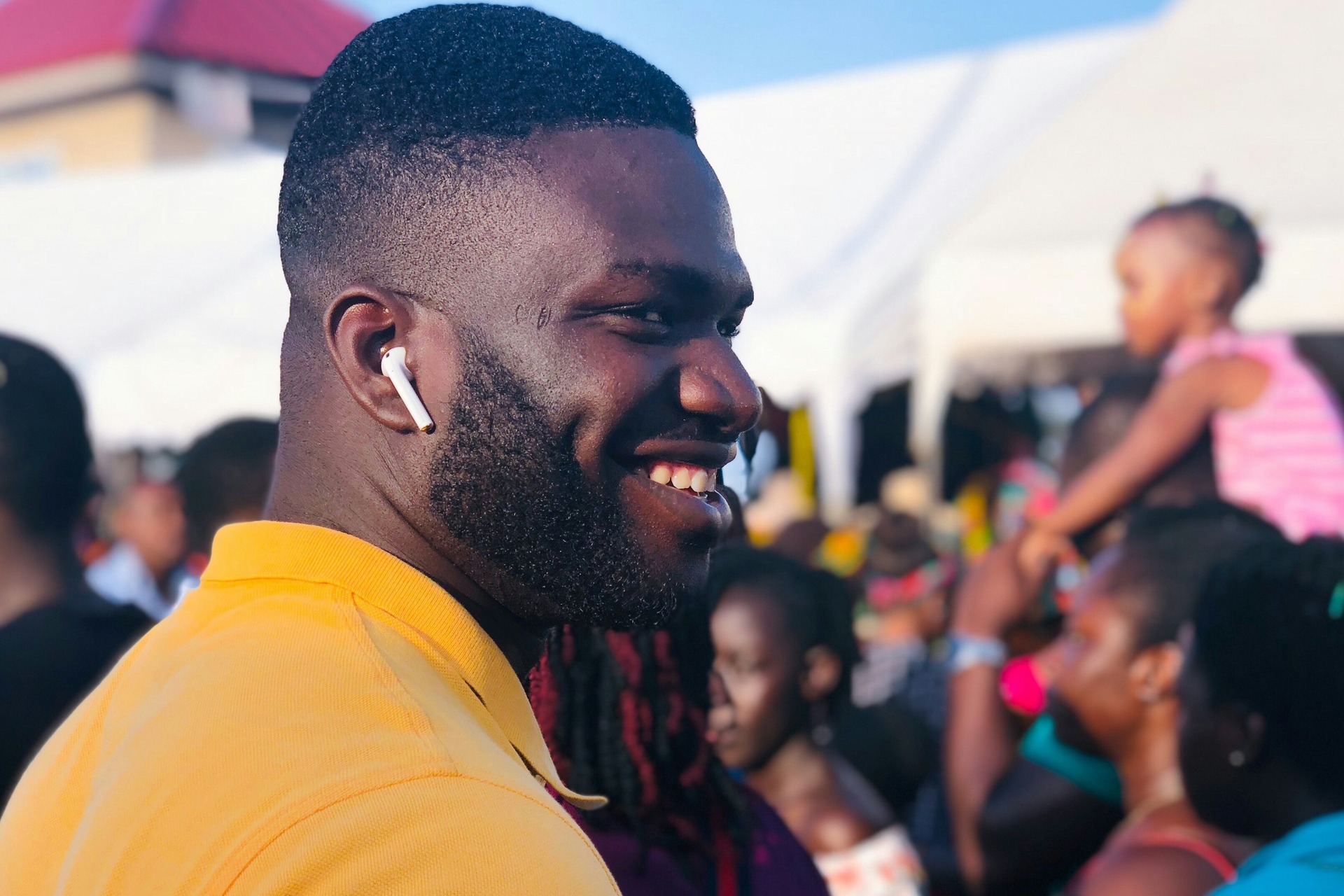
As an Amazon Associate, Modded gets commissions for purchases made through links in this post.
The PGA Tour is the premiere tour for professional golfers in North America. Tour members travel around the continent on a neverending schedule of events, including some of the world’s most famous golf tournaments. When people first start watching golf, they always have the same question — how does the PGA Tour work?
This beginner’s guide will take you through the PGA Tour’s organization, schedule, point system, tour status and player eligibility to help you get a better understanding and viewing experience.
PGA Tour and PGA — NOT the Same
There is a common misconception among the golfing community that the PGA Tour and PGA are the same organization. Although they share the same acronym — Professional Golfer’s Association of America (PGA) — they are two separate entities. While the PGA encompasses several other professional or semi-professional golf tours, the PGA Tour operates independently.
Originally established by the Professional Golfers’ Association of America (PGA of America) way back in 1916, the PGA Tour became its own league in 1968 when it broke away from the PGA of America due to payment and eligibility disputes. Its original name was the “Tournament Players Division”, but it finally adopted the “PGA Tour” name and logo in 1975.
Today, the PGA Tour runs most of the weekly professional golf events that get televised on CBS, NBC, ESPN, the Golf Channel and other American TV networks. Here’s a full breakdown of the PGA Tour’s typical schedule.
PGA Tour Schedule
The PGA Tour schedule runs from January through August, hosting events in the United States, Canada, Mexico, the Caribbean and Europe. The events take place at the same times and locations every year, which has allowed them to develop their own unique atmospheres and traditions.

Tour officials have also strategically chosen each event’s location to maximize the chance of good weather and ensure that playing conditions are up to professional standards. Here’s a quick rundown of each PGA Tour event in chronological order:
January
- Sentry Tournament of Champions, Plantation Course, Kapalua, Hawaii.
- Sony Open, Waialae Country Club, Honolulu, Hawaii.
- American Express Desert Classic, Pete Dye Stadium Course, La Quinta, Calif.
- Farmers Insurance Open, Torrey Pines Golf Course, San Diego, Calif.
February
- AT&T Pebble Beach Pro-Am, Pebble Beach Golf Links, Pebble Beach, Calif.
- Waste Management Phoenix Open, TPC Scottsdale, Scottsdale, Ariz.
- Genesis Invitational, Riviera Country Club, Pacific Palisades, Calif.
- Mexico Open at Vidanta, Vidanta Vallarta, Vallarta, Mexico.
- Cognizant Classic, PGA National Resort, Palm Beach Gardens, Fla.
March
- Puerto Rico Open, Grand Reserve Golf Club, Rio Grande, Puerto Rico.
- Arnold Palmer Invitational, Arnold Palmer’s Bay Hill Club and Lodge, Orlando, Fla.
- THE PLAYERS Championship, TPC Sawgrass, Ponte Vedra Beach, Fla.
- Valspar Championship, Innisbrook Resort, Palm Harbor, Fla.
- Texas Children’s Houston Open, Memorial Park Golf Course, Houston, Texas.
April
- Valero Texas Open, TPC San Antonio, San Antonio, Texas.
- The Masters Tournament, Augusta National Golf Club, Augusta, Ga.
- Corales Puntacana Championship, Puntacana Resort & Club, Punta Cana, Dominican Republic.
- RBC Heritage, Harbour Town Golf Links, Hilton Head Island, S.C.
- Zurich Classic of New Orleans, TPC Louisiana, Avondale, La.
May
- The CJ CUP Byron Nelson, TPC Craig Ranch, McKinney, Texas.
- Myrtle Beach Classic, The Dunes Golf and Beach Club, Myrtle Beach, S.C.
- Wells Fargo Championship, Quail Hollow Club, Charlotte, N.C.
- PGA Championship, different location every year.
- Charles Schwab Challenge, Colonial Country Club, Fort Worth, Texas
- RBC Canadian Open, Hamilton Golf & Country Club, Hamilton, Ontario, Canada.
June
- The Memorial Tournament, Muirfield Village Golf Club, Dublin, Ohio.
- U.S. Open, different location every year.
- Travelers Championship, TPC River Highlands, Cromwell, Conn.
- Rocket Mortgage Classic, Detroit Golf Club, Detroit, Mich.
July
- John Deere Classic, TPC Deere Run, Silvis, Ill.
- Genesis Scottish Open, The Renaissance Club, North Berwick, Scotland.
- Barracuda Championship, Tahoe Mountain Club, Truckee, Calif.
- Open Championship, different location in the United Kingdom every year.
- 3M Open, TPC Twin Cities, Blaine, Minn.
August
- Olympic Men’s Golf Competition, Le Golf National, Paris, France.
- Wyndham Championship, Sedgefield Country Club, Greensboro, N.C.
- FedEx St. Jude Championship, TPC Southwind, Memphis, Tenn.
- BMW Championship, Castle Pines Golf Club, Castle Rock, Colo.
- TOUR Championship, East Lake Golf Club, Atlanta, Ga.
You’ll notice that only three Tour events don’t have permanent locations — the PGA Championship, U.S. Open and Open Championship. These events are three of the four major tournaments in professional golf and have much higher prestige than the other PGA Tour events. As such, they rotate to different golf courses to create more of a challenge.
The Masters is the fourth major tournament, but it takes place at Augusta National every year because of a longstanding tradition that predates the PGA Tour itself. Players and fans alike don’t want the tournament to happen anywhere else, so it has remained in Augusta. THE PLAYERS Championship has become an unofficial “fifth major” in recent years.
PGA Tour Point System — The FedEx Cup
The PGA Tour works on a season-long points competition called the FedEx Cup Standings. During the regular season, players primarily earn FedEx Cup points based on their placing in each tournament. In most cases the winner earns between 300 and 550 points to get a huge boost in the rankings, while the winner of a major tournament or the PLAYERS gets 600 points.

Players can also earn FedEx points by making the “cut” after the second round, getting a high placing and scoring low rounds. That means a player who regularly gets a high placing but never wins a tournament will earn more points throughout the season than a player who wins one event but performs poorly in other tournaments. Many other sports leagues follow this season-long format to keep the competition fair and reward the most consistent players.
In January, the PGA Tour field starts with 125 players and ends with a single victor. This field stays at 125 for most of the year until it cuts down to 70 for the FedEx Cup Playoffs, where the best players compete for $70 million in prize money. The playoffs include the final three events on the schedule — St Jude Championship (70 players), BMW Championship (50 players) and TOUR Championship (30 players).
The first two playoff events award 2,000 points to the winner, while the TOUR Championship features a starting stroke system to give the higher “seeds” a better chance of winning. In a nutshell, the remaining players with the most points start the championship between 10 and 1-under par as a reward for their strong postseason performance.
The winner of the FedEx Cup gets an $18 million bonus and a five-year exemption, meaning that his spot on the Tour is guaranteed for the next five years. The following year, all reigning champions of a PGA Tour event are invited to the Sentry Tournament of Champions to kick off the next Tour season. And so the cycle starts again.
Tour Status and Eligibility
Although golf is considered an aristocratic sport and has limited access, the PGA Tour has done an excellent job establishing a meritocracy. All Tour-sanctioned competitions are built on a metaphorical ladder that players try to climb. The lowest rung of the ladder is the PGA Tour Q-School, which is the most direct way to earn a Tour card.

Only five players can pass the four stages of the Q-School, after which they start playing on the Korn Ferry Tour — essentially the amateur or semi-professional version of the main PGA Tour. After every Korn Ferry Tour season, 30 players earn Tour cards and can start playing with the biggest names in the sport.
Players that have earned their Tour cards can also lose their spot on the PGA Tour for poor performance. This type of demotion usually happens with older players when they begin to physically decline. Instead of playing on the main tour, these players transfer to the PGA Tour Champions, a branch for senior golfers.
Don’t Miss the Best Golf in the World
Now that you know how the PGA Tour works, you can sit back and enjoy the sport without getting confused about the standings. The PGA Tour undoubtedly features some of the best golf and the most prestigious tournaments in the world. Whether you’re new to the sport or have years of experience, you’re in for a treat.
Think you’re ready to become a professional yourself? Check out our breakdown of how to get into golf and tips for golfing as a beginner.
Stay up to date with the latest by subscribing to Modded Minute.
Author
Jack Shaw is a senior writer at Modded. Jack is an avid enthusiast for keeping up with personal health and enjoying nature. He has over five years of experience writing in the men's lifestyle niche, and has written extensively on topics of fitness, exploring the outdoors and men's interests. His writings have been featured in SportsEd TV, Love Inc., and Offroad Xtreme among many more publications.






